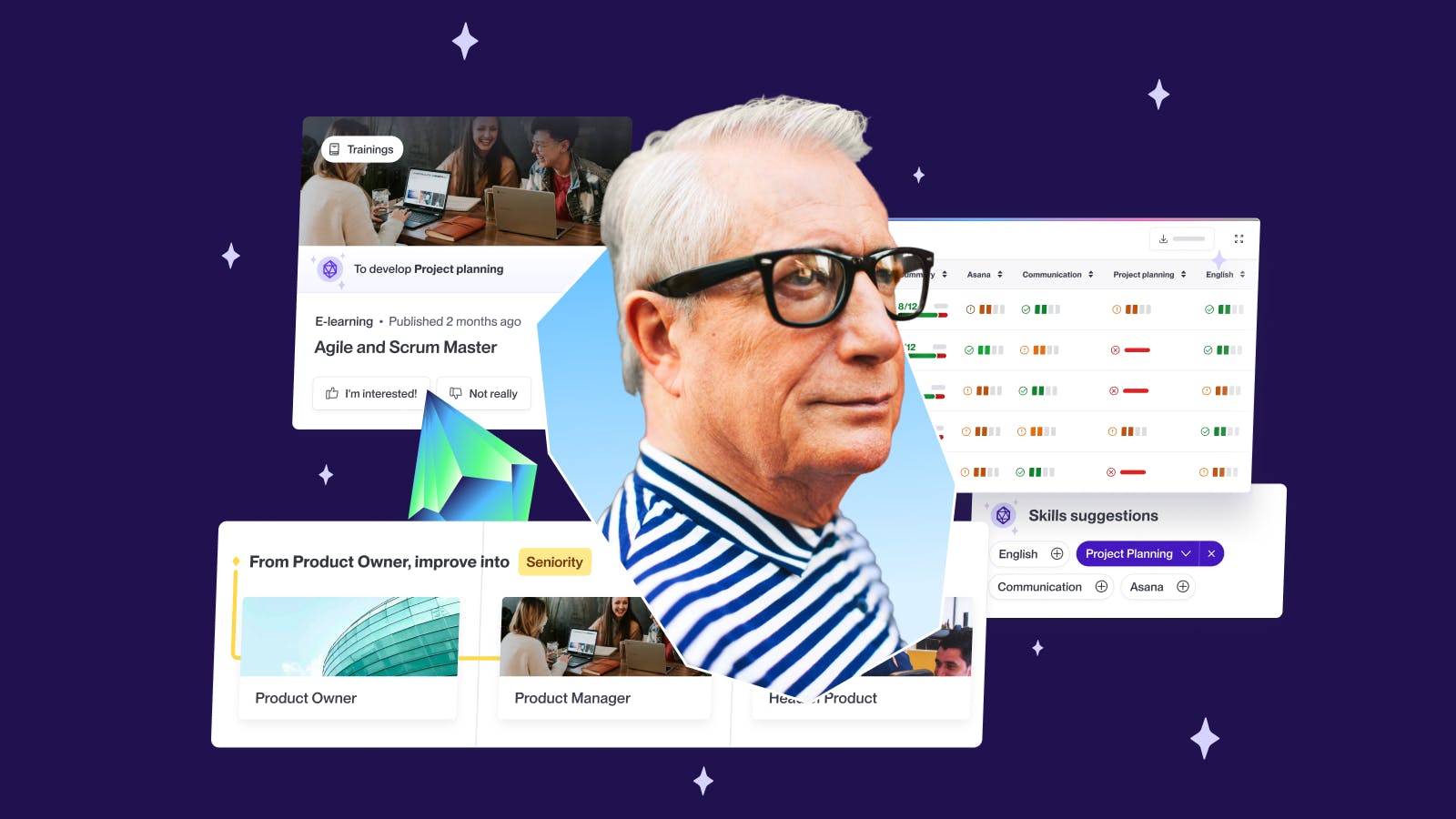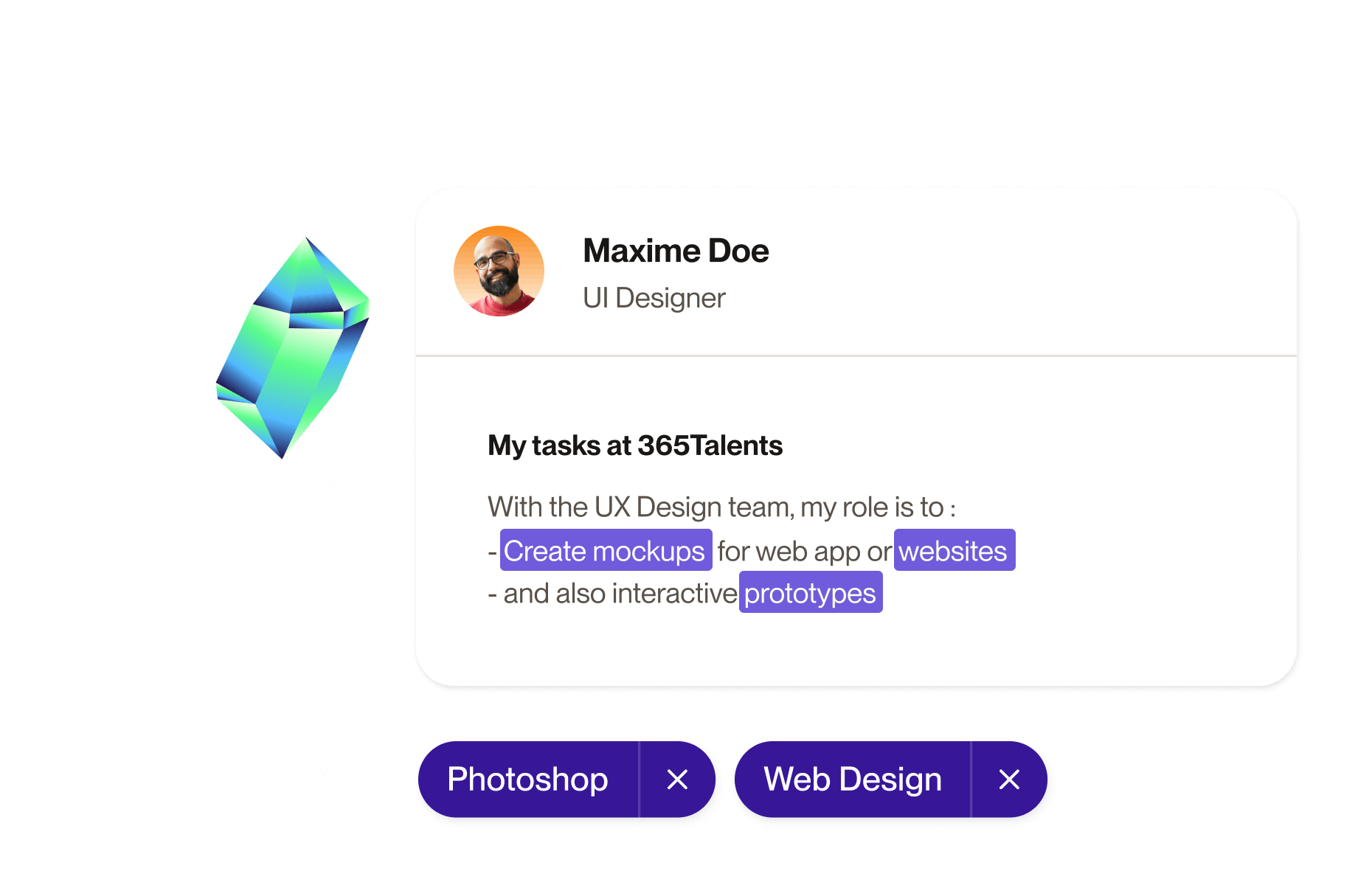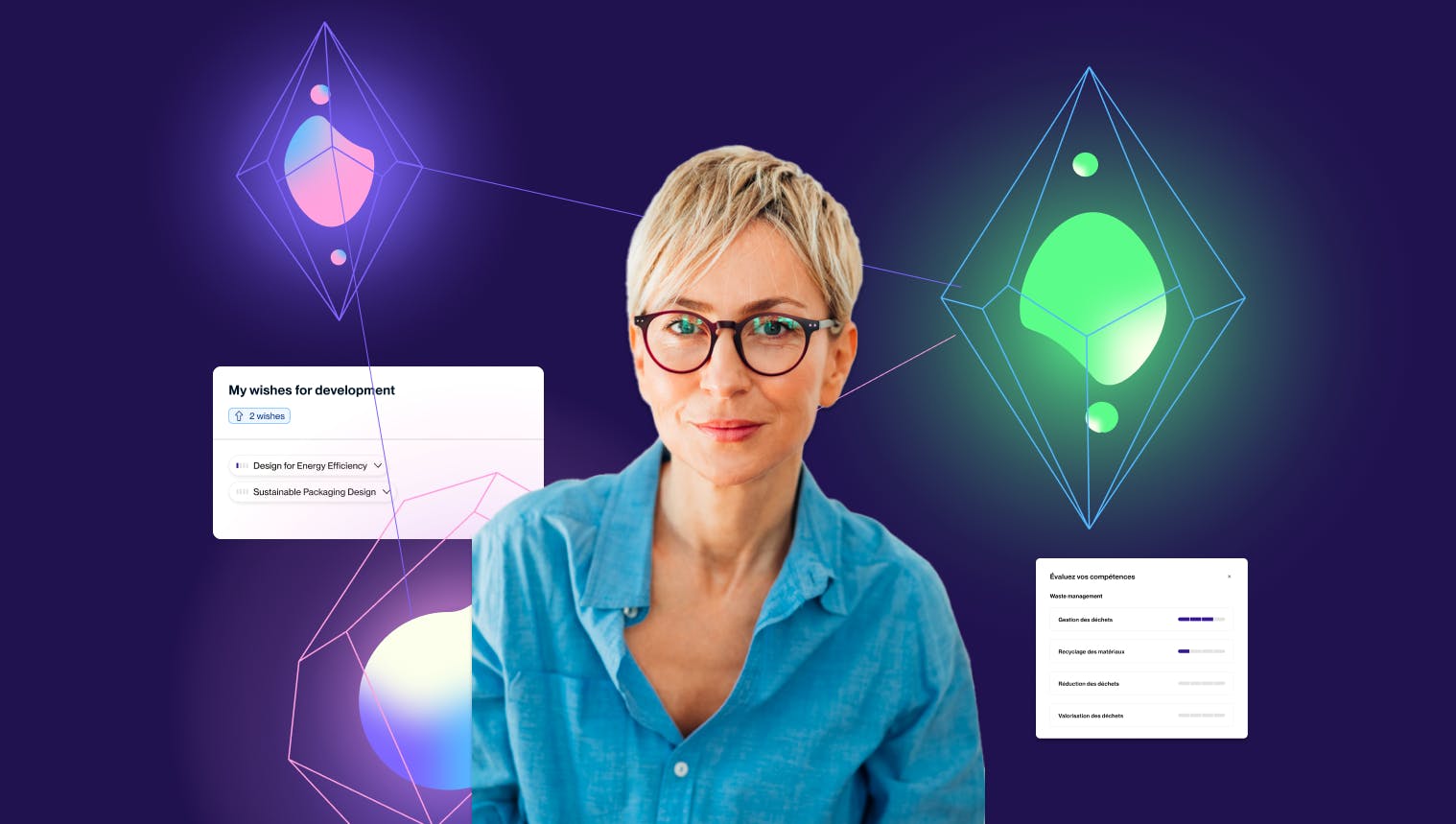Skills Framework: A Must-Have HR Tool in 2024

A skills framework, also known as a competency framework, skills map, or skills referential, is an essential tool for HR teams. It provides a comprehensive view of your workforce's skills and competencies, highlights existing gaps, and helps design effective career paths and training plans.
While companies track skills differently—either dynamically or statically, which we’ll explain shortly—the overarching goals and principles of a skills framework remain consistent.
What is a Skills Framework?
A skills framework is a system for cataloging, organizing, and tracking the skills within an organization. It provides insight into your current skill sets, identifies future needs, and helps outline a strategy for skill development.
For employees, a skills framework offers clarity about their current competencies, what skills they may need to develop for future roles, and how acquiring new skills can open up career opportunities.
Traditionally, skills frameworks were static, but with advancements in digital technology and artificial intelligence, they are becoming increasingly dynamic and adaptable.
From static to dynamic: the evolution of Skills Frameworks
In its early days, a skills framework was considered “static,” meaning once it was created, it required manual updates. Without regular refinement, the framework would quickly become obsolete, especially in today’s fast-changing business environment driven by technological advancements and economic shifts.
Now, with digital tools and AI, a skills framework can evolve automatically, becoming a dynamic repository that grows and updates itself in real-time.
Four key functionalities make this possible:
- Pre-filling skills: AI-driven technology suggests relevant skills based on employee roles or industry trends.
- Data imports: You can easily pull data from existing sources to populate the framework.
- Self-declaration: Employees can update their own skills, providing a more accurate picture of capabilities.
- Automatic updates: Skills are continuously updated as employees complete training or take on new tasks.
This automation allows HR teams to focus more on strategic work, such as employee development and engagement, rather than administrative tasks.
Top benefits of implementing a dynamic skills framework in HR
A dynamic skills framework centralizes all skills and competency levels across the company. This digital tool enables employees to regularly update their skills, which enhances their autonomy and empowers them to take control of their career development.
With this transparency, employees are better able to understand their skill set and can actively engage in their own growth. Additionally, digital management simplifies how skills data is stored, searched, and shared, making the framework accessible to everyone in the organization.
A well-constructed skills framework is also foundational to strategic workforce planning (SWP), influencing talent management, learning and development, internal mobility, and recruitment strategies.

Key objectives of a Skills Framework
A robust skills framework delivers significant benefits to both HR teams and the broader organization:
- Optimized recruitment A skills framework improves recruitment by clearly defining the specific skills needed for each role. This precision helps HR target recruitment efforts more effectively, leading to time and cost savings, as well as better alignment between new hires’ skills and company needs.
- Anticipating skills needs With a skills framework, you can proactively manage future skill requirements. This forward-thinking approach ensures you have the right people and capabilities in place, helping guide your training and development plans.
- Enhanced skills assessment A skills framework makes skills evaluation more objective and consistent. HR managers can better identify high-potential talent and support their growth through targeted development programs.
In conclusion, a dynamic skills framework is more than just a tracking tool—it’s a strategic asset that supports talent management, fosters internal mobility, and future-proofs your organization by ensuring you stay ahead of evolving skills needs.
Why is a skills framework necessary for HR and all organizations?
Nowadays, managing company skills is vital. Whether facing health or economic crises, organizations need to be agile and responsive to navigate rapid change. A dynamic skills framework helps HR professionals tackle these challenges effectively, supporting them in carrying out their responsibilities. But what specific HR challenges does it address?
In 2024, as organizations adapt to new market demands, managing skills has become more critical than ever. A skills framework is an indispensable tool for staying competitive and preparing for the future.
The era of Skills Management
A skills framework, or repository, is a strategic tool for identifying, evaluating, and managing the skills of your employees. As companies strive to remain competitive in 2024, it’s crucial to define the skills required for each position accurately and to monitor employee skill development continuously.
This framework provides a clear overview of the company's current skills landscape and any skill gaps while enabling HR to manage jobs and anticipate future talent needs proactively. Leveraging softwares designed for skills management simplifies the process and ensures more precise and efficient outcomes.
In short, a skills framework is essential for training, recruitment, and talent evaluation. It aligns your talent management strategy with your company’s broader goals by helping HR managers identify both technical skills and soft skills that need to be strengthened.
The benefits of a Skills Framework

Training employees in new tools and processes
To fully utilize a dynamic skills framework, it’s essential to onboard your entire workforce. Training employees on the digital platform is a key first step as it allows them to self-declare their skills, giving HR a more accurate view of available competencies. However, it’s important to monitor this process to ensure its effectiveness.
Fostering agile internal mobility
A dynamic skills framework powered by artificial intelligence enables employees to regularly update their skills. The system then maps these updates in real-time, indicating whether they are interested, practicing or mastering a particular skill. This data can then be used to provide mobility suggestions aligned with your HR strategy.
These real-time insights open up meaningful dialogue between HR and employees, allowing HR to guide employees through an agile internal mobility process. Whether for immediate or long-term opportunities, this approach helps organizations:
- Stay competitive by maintaining an up-to-date overview of key skills
- Quickly fill internal vacancies
- Build employee loyalty by offering continuous development opportunities
- Creating an engaging Learning and Development Strategy
In the context of internal mobility, employees self-assess their competency levels within the dynamic framework. Based on this data, the system can suggest relevant training programs to help employees acquire the skills they’re missing.
For HR, this allows you to:
- Support employees in skills development using targeted learning programs
- Streamline and optimize your training catalog
- Analyze trends in skills acquisition to identify potential future leaders
This cycle enriches the company’s overall talent pool, creating a continuous feedback loop where employees develop new skills, which further enhance the organization’s capabilities.
Supporting Strategic Workforce Planning (SWP)
Strategic Workforce Planning (SWP) enables companies to anticipate and adapt to technological, economic, and organizational changes. With a dynamic skills framework, you gain real-time insight into employees’ strengths and gaps, helping HR assess which skills are becoming obsolete and which are in demand.
SWP addresses several critical challenges:
- Adapting job roles to a changing environment
- Encouraging internal mobility
- Developing and supporting employee skills for future roles
- Managing demographic shifts, such as the aging workforce
- Facilitating internal knowledge transfer
- Sustaining long-term growth and competitiveness
By leveraging a skills framework, HR can identify current competencies, forecast future needs, and make informed decisions to align human capital with the company’s evolving strategy.
Enhancing recruitment strategies
When internal mobility isn’t sufficient to fill skill gaps, a skills framework supports external recruitment efforts. The framework provides a clear map of the company’s current capabilities and highlights areas where additional skills are needed.
Using this data, HR can design recruitment campaigns that target specific skill sets aligned with the company’s strategy. Additionally, the framework helps ensure job descriptions accurately reflect the required skills, streamlining the recruitment process and improving outcomes.
Supporting annual performance reviews
The skills framework also plays a vital role in performance management. During the annual review process, managers and employees can discuss the employee’s role, objectives, achievements, and challenges. The framework serves as a reference, allowing managers to assess the employee’s skills based on concrete data.
Additionally, during professional development discussions, employees can use the framework to highlight skills they want to develop or training they wish to pursue. For HR, this means the skills framework becomes a foundational tool, facilitating more productive and focused annual reviews.
As we have seen, company skills are a vital factor and in a health or economic crisis, for example, you need to be reactive and agile to cope with rapid change. So, how can HR professionals use this dynamic framework to carry out their missions successfully? What HR challenges does it address?
Today, skills management is crucial and a skills framework is essential for any organization adapting to new market demands.

How to build a competency framework?
Setting up a skills repository requires a rigorous methodology and the involvement of all levels of the company. Here are the key steps for a successful development:
Define objectives: Clearly identify what you want to achieve with your repository, whether it's recruitment, training, or talent management.
Map skills: Draw up a list of existing skills and the skills required for each position. Use skills management tools to centralize this information.
Evaluate skills: Carry out a skills assessment of your employees to identify gaps between current skills and the skills needed. This can be done via interviews, tests, or feedback.
Develop a training plan: Based on the results of the assessment, implement training actions to fill the gaps identified. Use e-learning platforms to offer personalized training paths.
Implement the tools: Adopt skills management and artificial intelligence softwares to automate and optimize skills tracking. Make sure these tools are well integrated into your human resources management system.
Communicate and train: Inform your employees about the objectives and benefits of the skills repository. Train them to use the new tools and platforms.
By following these steps, you'll be able to build a robust and effective skills repository, capable of meeting your company's current and future challenges.
What are the tools for optimal skills management?
Numerous technological tools are available to help you effectively manage skills within your company.
Skills mapping software
Skills mapping and talent management softwares are particularly useful for centralizing data, analyzing skills gaps and planning development actions.
AI tools
Artificial intelligence also plays a crucial role in skills management. Algorithms can analyze vast quantities of data to identify trends and development opportunities while predicting which skills will be needed in the future, enabling more accurate forecasting.
Online platforms
There are platforms dedicated to online training, offering resources tailored to every skill development need. They enable you to build personalized training paths and track employee progress in real time.
The adoption of these tools requires careful consideration of your company's specific needs. It's crucial to choose solutions that are adapted to your objectives and organizational capabilities to maximize their effectiveness.
365Talents offers an AI-powered solution designed specifically for HR teams to easily create tailored skills and job architecture that align your organization’s unique needs.
By blending advanced AI-driven technology with profound human expertise, we provide a customized framework that serves as a solid foundation for your skills and job architecture. Our solution supports your organization’s growth, seamlessly integrating with your systems while enhancing learning, performance, and workforce mobility.
No data? No problem.
Regardless of where you are in your data journey, 365Talents delivers the technology and expertise to help you build a unique skills and job architecture tailored to your organization.
We start by centralizing your job data, even if it's fragmented or incomplete. Our AI-powered platform organizes and structures this data, creating the first version of your job architecture while defining key skills and proficiency levels.
At the same time, we develop a comprehensive skills ontology that aligns with your roles. This includes dynamic visualizations of your skills and job data (Skills and Job Galaxies), highlighting relationships and skills gaps, and uncovering development opportunities across your workforce.
Learn more about our Skills and Job Architecture solution by booking a demo here.








Conclusion
The skills repository is an indispensable tool for any company wishing to remain competitive and optimize its talent management. By centralizing skills and facilitating their evaluation, the skills repository enables you to better anticipate human resources needs and promote the development of your employees' skills.
By adopting this approach, you can ensure a more effective forward-looking management of jobs and skills, an improved assessment and better-targeted training. By integrating technologies such as artificial intelligence and specialized softwares, you can transform this challenge into an opportunity for growth and innovation for your company.
What are the benefits of using a skills repository for employees?
A skills repository provides a clear vision of expectations and development opportunities within the organization.
How can a skills framework be integrated into talent management?
To effectively integrate a skills repository into talent management, it is essential to use it as the basis for recruitment and performance appraisal processes. HR can use the data to identify skills gaps and plan appropriate training actions.
How do you build a corporate skills repository?
To set up a skills repository, start by defining your company's talent management objectives. Identify the skills required for each position and create a skills map, taking stock of existing skills and identifying gaps.
Then, carry out an employee skills assessment to identify any gaps between the current and required skills. This assessment will enable you to plan appropriate training actions and define personalized skills development paths.
It should also be noted that the implementation of a skills framework also requires the involvement of all stakeholders, in particular managers and employees. Transparent and regular communication on the importance of this tool and the benefits it brings is essential for its adoption and success.














